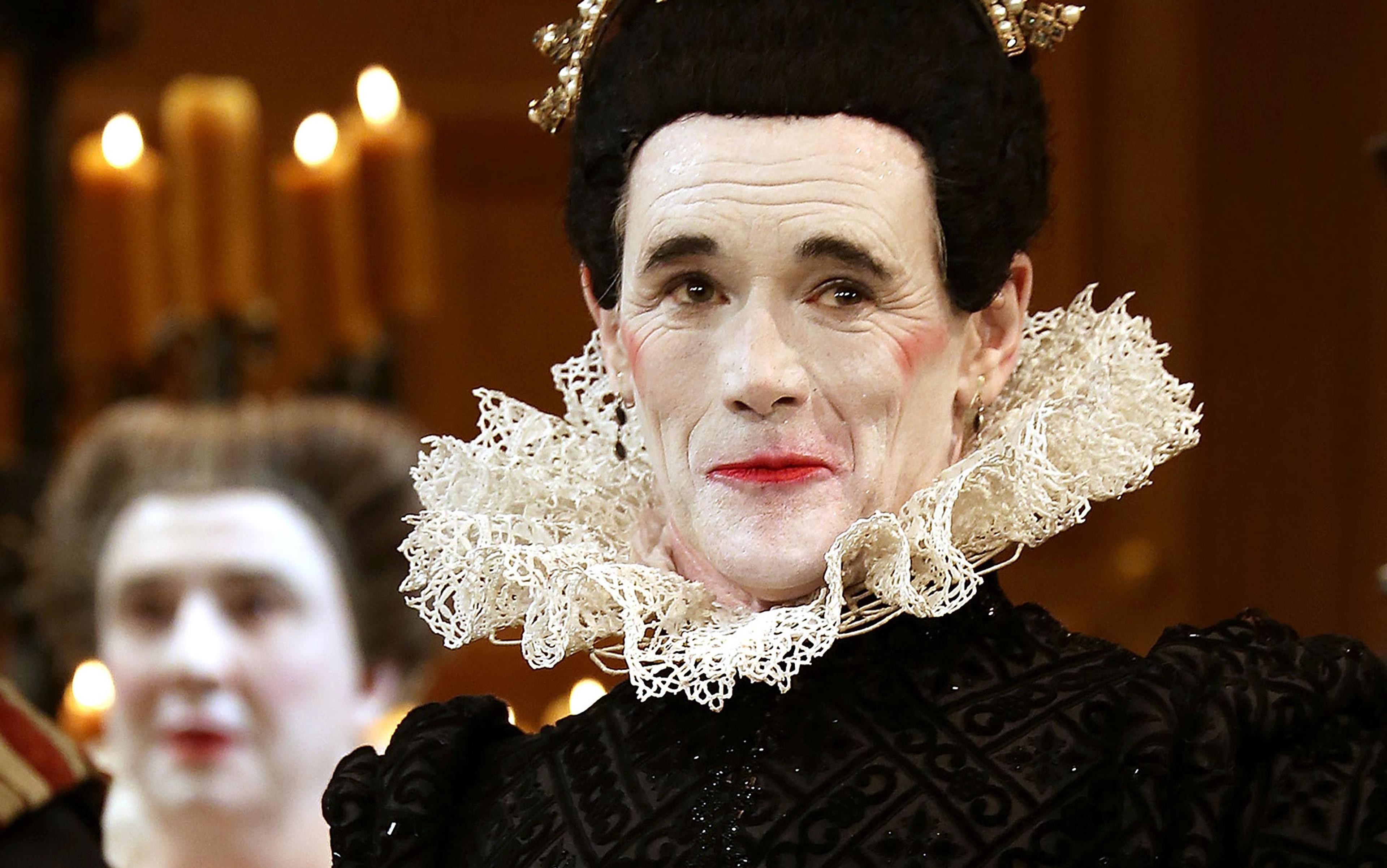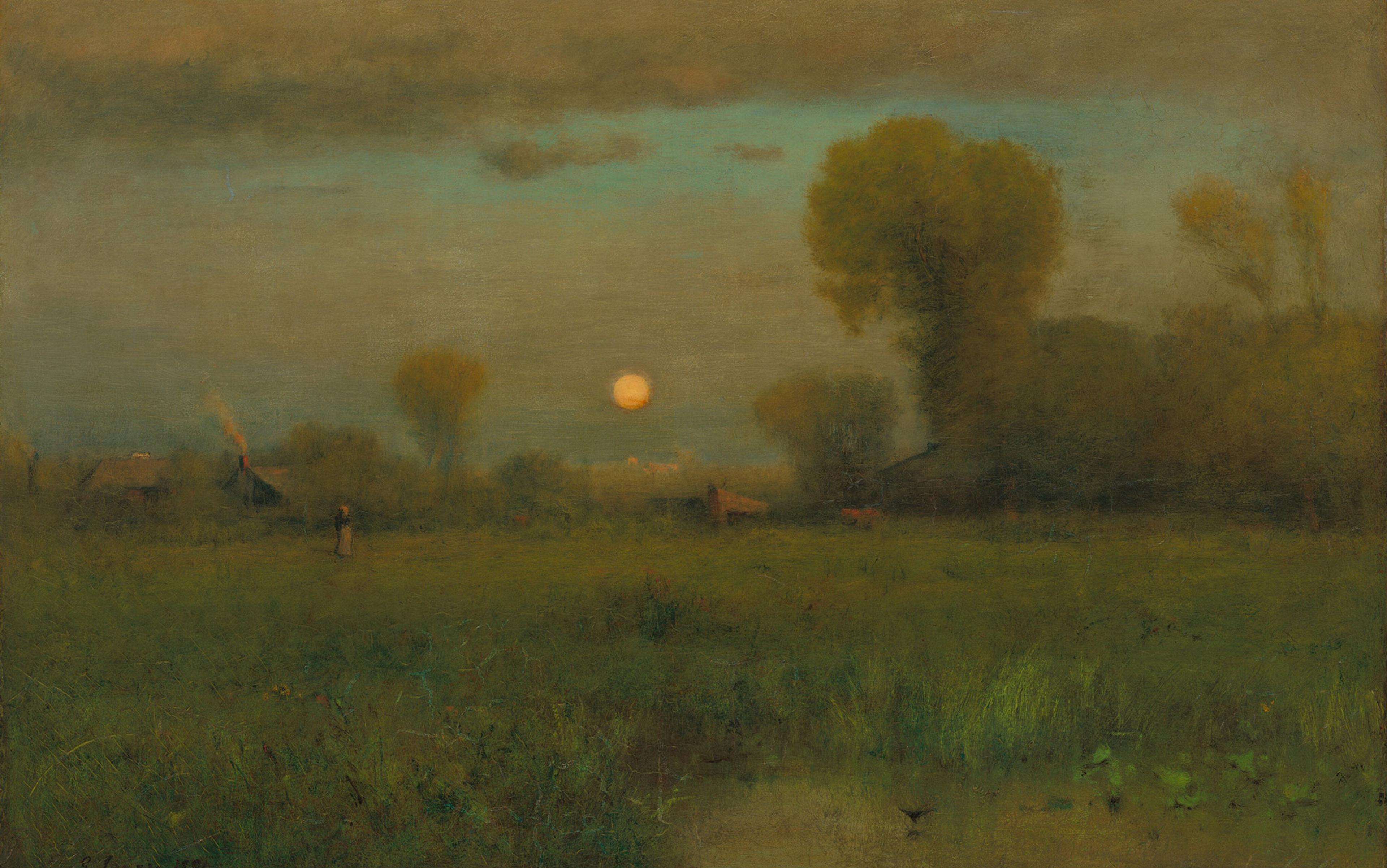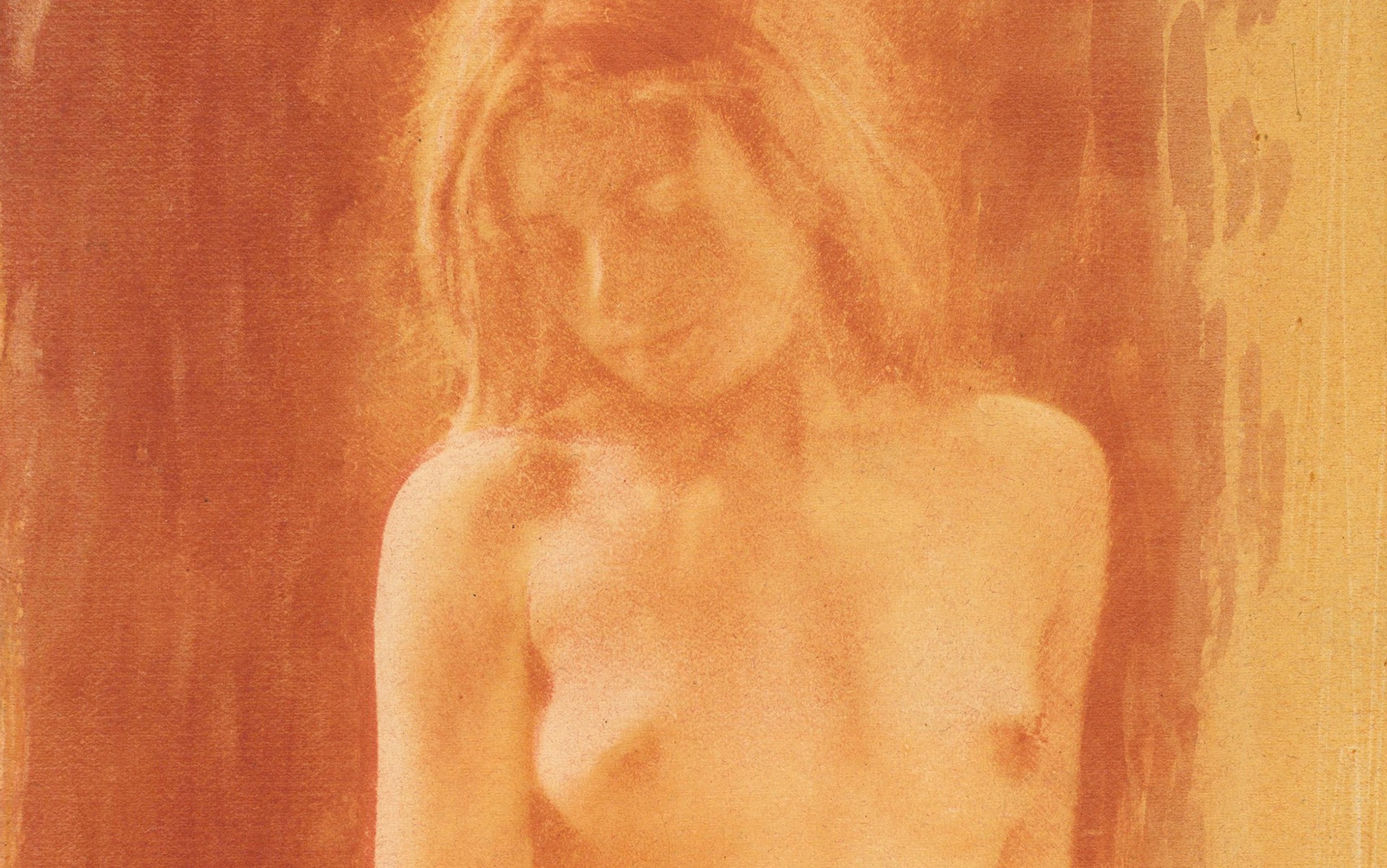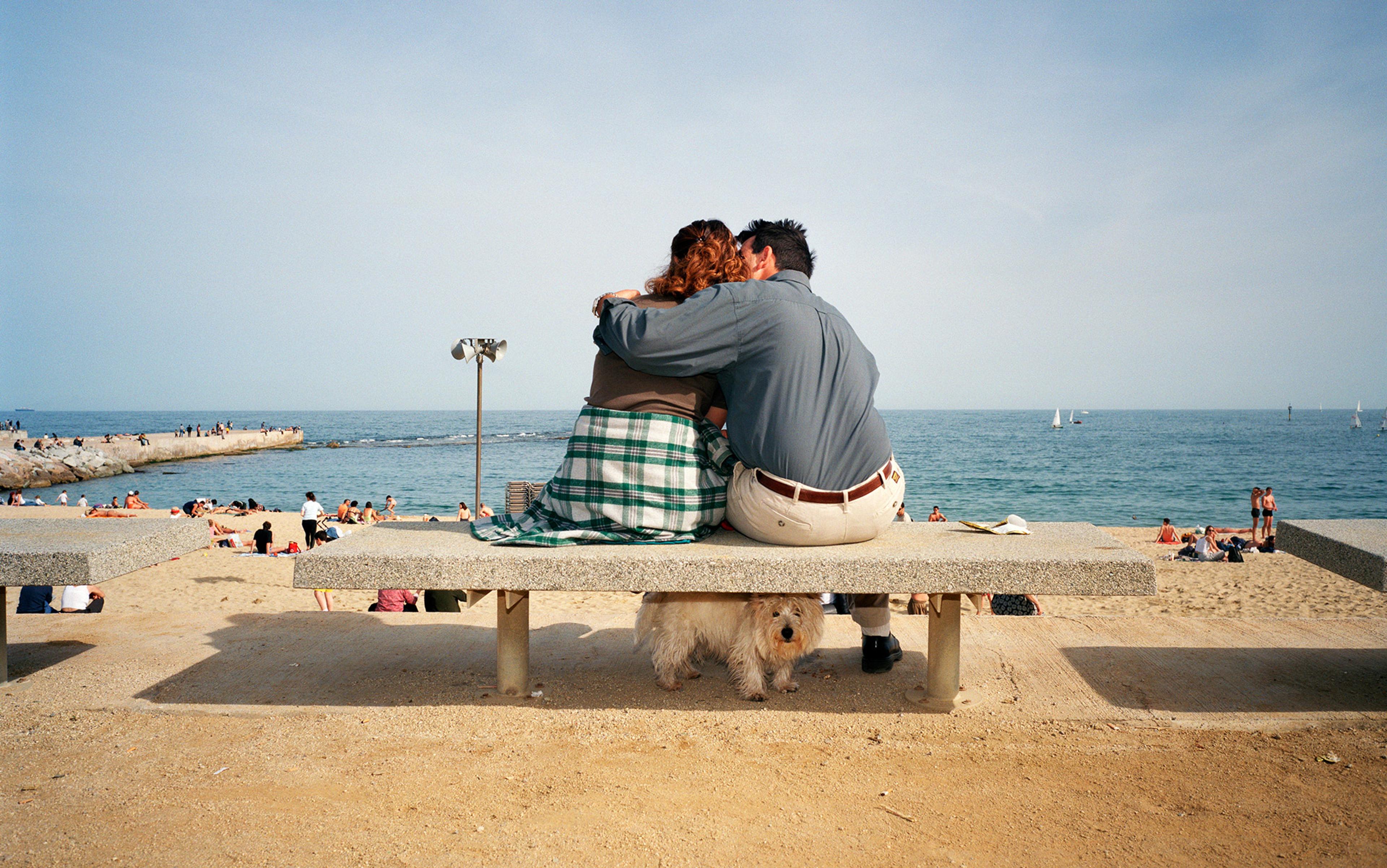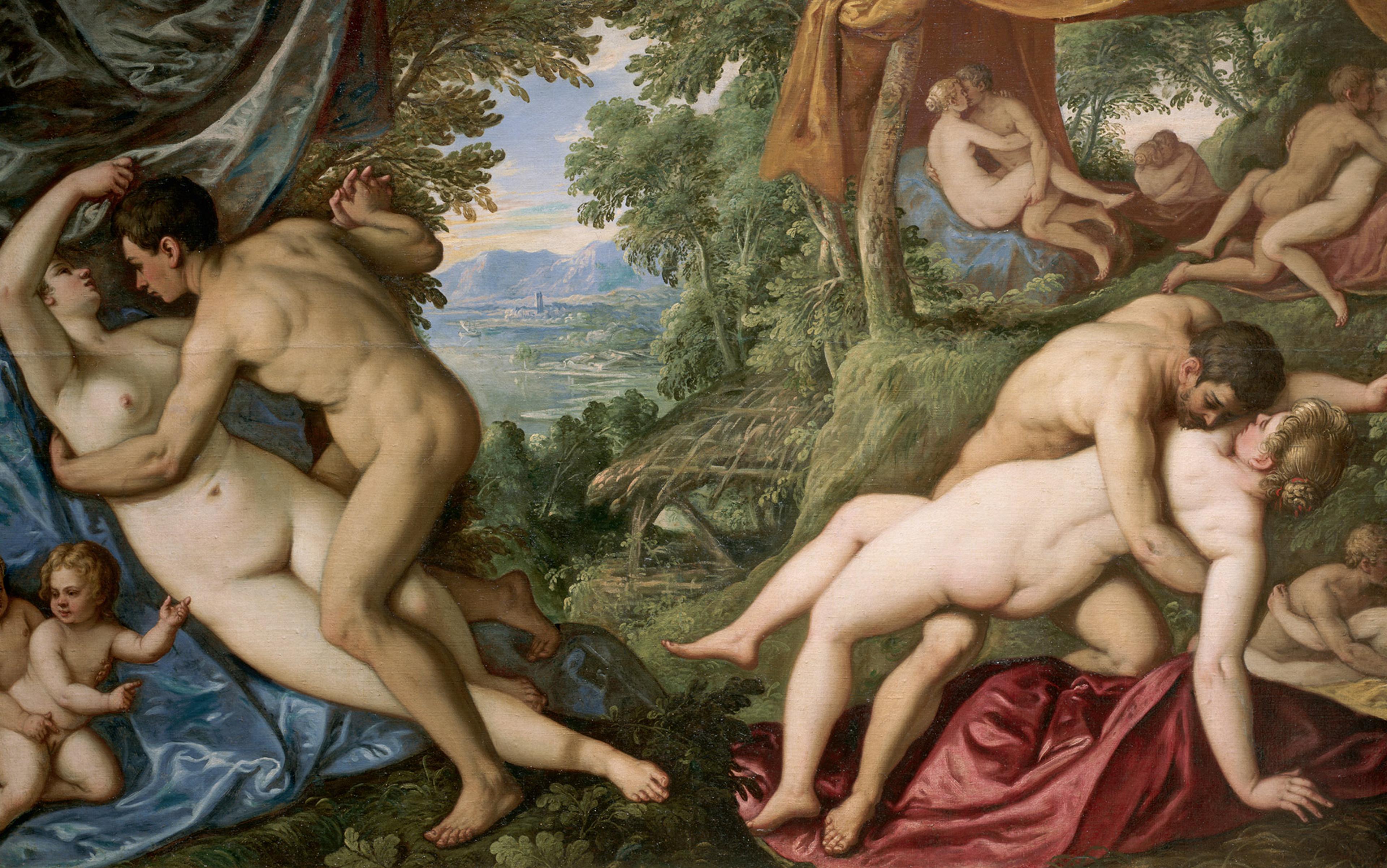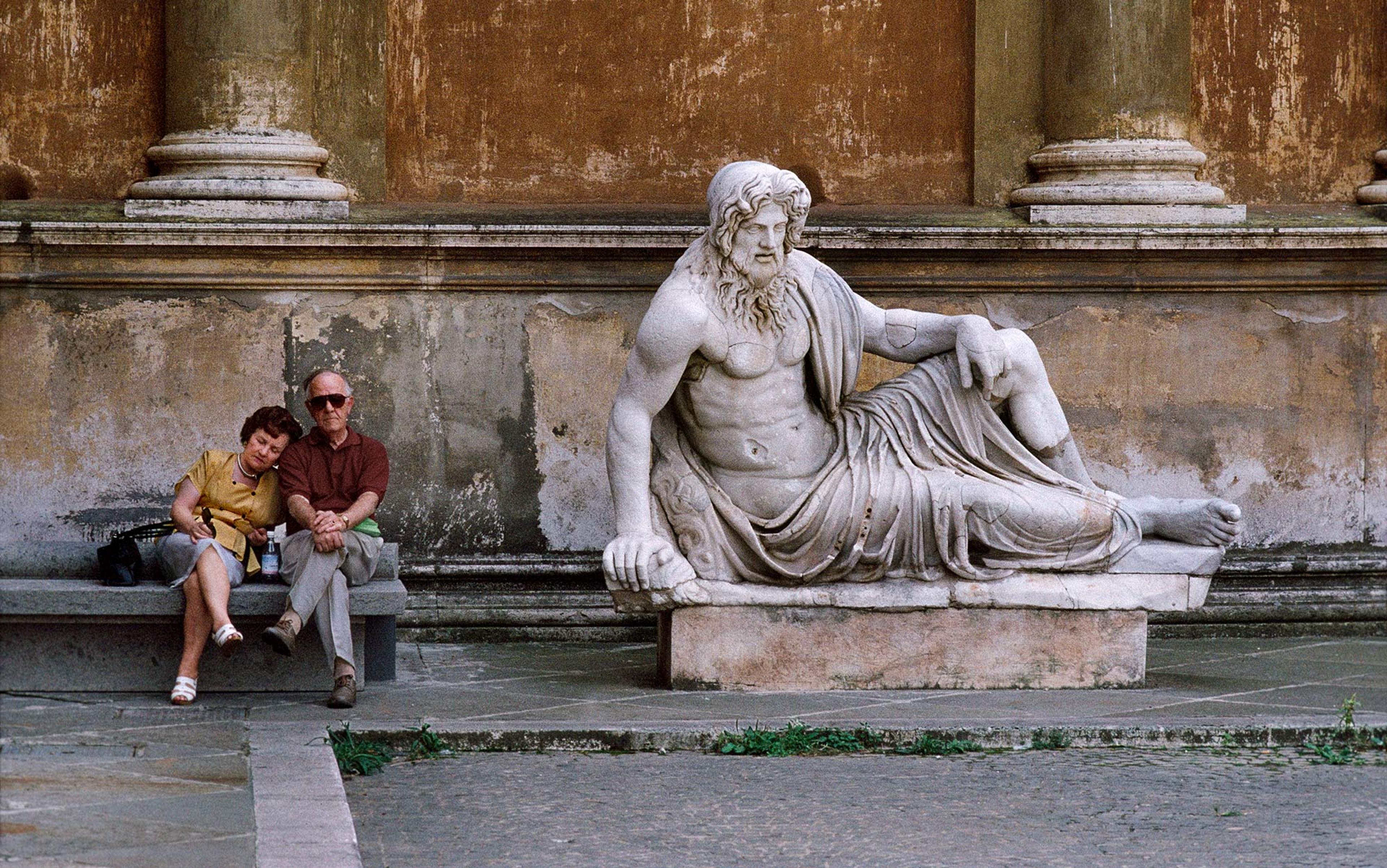William Shakespeare’s sonnets are among the most disputed works in literary history. Like most sonnet cycles of the time, they follow a loose but discernible narrative about ideal love but, unlike any other known sonnet cycle, the lover and his beloved are both men. The first 126 sonnets (out of 154) are addressed to a male character known to Shakespeare scholars as the Fair Youth, and include some of the most famous love poems in the English language. ‘Shall I compare thee to a summer’s day,’ for example, was written to the Fair Youth.
In various sonnets, Shakespeare (or his poetic counterpart) swears fidelity; stays up all night, consumed by jealousy; harps on the youth’s beauty again and again; despairs histrionically when they are briefly separated. In sonnet 20, Shakespeare begins: ‘A woman’s face with nature’s own hand painted,/Hast thou the master mistress of my passion…’ and goes on to lovingly inventory the points of the Fair Youth’s androgynous beauty. He ends the sonnet bemoaning how nature slipped up at the last moment and added a penis to the youth, or, ‘pricked thee out for women’s pleasure’. It’s hard to believe the poet sees this penis as a deal-breaker, though, given the 125 other sighing poems he addressed to his ‘master mistress’.
At the end of the cycle (sonnets 127-154), a woman suddenly appears, the so-called ‘Dark Lady’. These poems are again surprising in their content. Shakespeare carps about the Dark Lady’s dishonesty, her reeking breath, promiscuity, venereal disease, and dark complexion (synonymous with ugliness in the Elizabethan period). The poet-narrator is nonetheless having sex with her; in sonnet 133, more remarkably, it transpires that the Fair Youth is sleeping with her too. In sonnet 144, Shakespeare makes it clear which of the two he prefers:
Two loves I have of comfort and despair
Which like two spirits do suggest me still:
The better angel is a man right fair,
The worser spirit a woman coloured ill.
To make a long story short, the sonnets appear to describe a bisexual love triangle where Shakespeare’s true beloved is the man.
Many critics have found this so painful they simply refuse to believe it. The battle lines on the subject were first drawn in the 18th century, when George Steevens stated that he had deliberately omitted the sonnets from his 1793 edition of Shakespeare’s works because their homoeroticism filled him with ‘disgust and indignation’. His colleague Edmond Malone defended the sonnets with the handy idea that ‘such addresses to men were customary in our author’s time, and neither imported criminality, nor were esteemed indecorous’. That is, Shakespeare and the Fair Youth were just good friends, and writing such poems to a male friend was absolutely standard for Tudor heterosexuals.
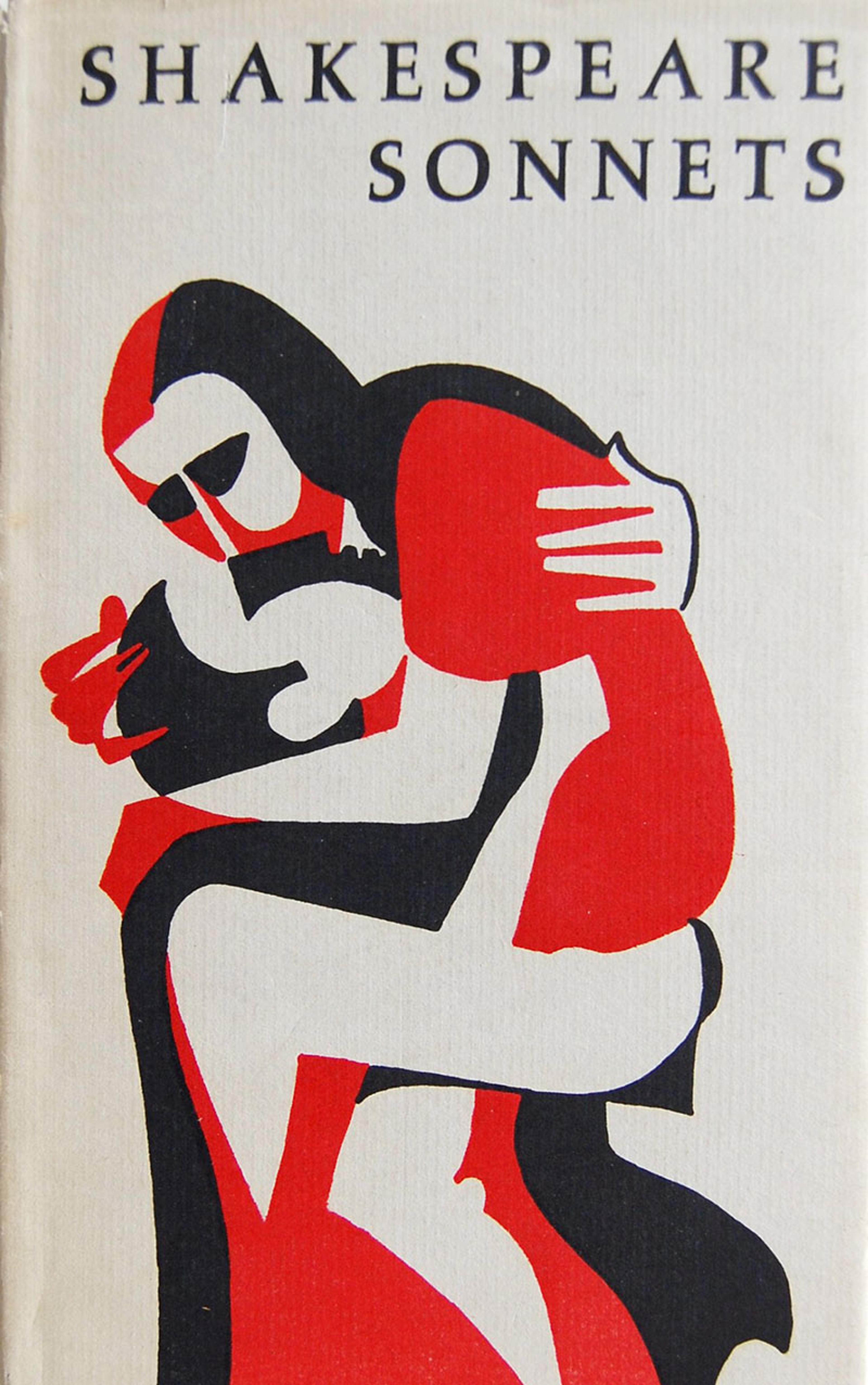
Cover illustration by Mary Jane Gorton for an edition of Shakespeare Sonnets © 1959 by Peter Pauper Press, Inc. www.peterpauper.com. Used with permission.
The idea is still current among deniers of Shakespeare’s queerness. For instance, in 2014, in a scholarly tiff in the letters page of The Times Literary Supplement, the critic Sir Brian Vickers called a reference to the sonnets’ homosexual content an ‘anachronistic assumption’.
This argument has the weakness of being false. While close and passionate friendship between men was normal at the time, it was not usual for men to dwell obsessively on the beauty and sexuality of their platonic friends, much less to write more than 100 sonnets about it. In Such Is My Love: A Study of Shakespeare’s Sonnets (1985), the critic Joseph Pequigney notes of Malone’s theory: ‘No supporting instances of these customary addresses are cited by Malone.’ Even C S Lewis, who remained unwilling to believe that Shakespeare engaged in ‘full-blown pederasty’, admitted in 1954 that he could find no heterosexual explanation for the sonnets: ‘[Their] language is too lover-like for that of ordinary male friendship … I have found no real parallel to such language between friends in 16th-century literature.’
Furthermore, sonnets were strongly associated with sexual love throughout this period. Shakespeare himself treats them as infallible signs of love in several of his plays, such as when Claudio in Much Ado About Nothing remarks of Benedick:
I’ll be sworn upon’t that he loves her
For here’s a paper written in his hand,
A halting sonnet of his own pure brain,
Fashion’d to Beatrice.
Another argument advanced against Shakespeare’s gayness is that the sonnets have no autobiographical basis: there was no real Fair Youth and no Dark Lady, and the sonnets, like many sonnet cycles, are pure inventions of the mind. This idea, first advanced by James Boswell in 1821, survives to the present day. It appears, for instance, in Peter Ackroyd’s popular 2005 biography of Shakespeare, where it’s presented almost as historical fact.
It’s true that in some sonnet cycles the beloved was purely imaginary; nor was it unheard of for Elizabethan poets to write gay love poems with fictional settings. The writing of such poems didn’t necessarily mean that the author was gay: Richard Barnfield wrote several poems about the love of men for boys, and went so far in his poem The Affectionate Shepherd (1594) that his contemporaries accused him of obscenity. He defended himself by saying he’d been misunderstood: the poem was ‘nothing else, but an imitation of Virgil, in the Second Eclogue’. In fact, Barnfield’s diaristic writings demonstrate an unalloyed heterosexuality. But there was an audience for gay poetry, and writers such as Barnfield pandered to it. These poems were, as Boswell suggested, wishing to include Shakespeare’s sonnets in the category, ‘effusions of fancy … for the amusement of a private circle’.
Such poems were always safely placed in a classical setting and framed as an homage to Greek or Roman literature. They were addressed not to contemporaries, but to Zeus’s cupbearer Ganymede, or to a conventionally lovely Roman shepherd boy. By contrast, the Fair Youth, even if he were fictional, would still be a contemporary character, living in the everyday world of Shakespeare’s England. This is unprecedented and is hard to explain as a choice that only one poet ever made.
The idea that Shakespeare’s sonnets were a fictional exercise begins to feel especially strained when the Dark Lady appears. It might be conceivable that, when he sat down to write a sonnet cycle, Shakespeare decided – unlike any other sonnet writer – to address 126 poems to a male beloved. But the whole thing becomes preposterous when we are asked to believe that, when he added a fictional woman to the mix, he made her a dark-skinned, syphilitic, conventionally unattractive person who was also fucking the man from sonnets 1-126. As the scholar Arthur Freeman asked in the pages of The Times Literary Supplement, rebutting Vickers: ‘Why on earth would Shakespeare choose so often to impersonate a pathetically ageing, balding, lame and vulnerable bisexual suitor, abjectly whingeing about rejection and betrayal – unless the self-humiliation that surfaces again and again through these particulars were both genuine and cathartic?’ In short, I think we can assume there was a real Fair Youth and Dark Lady.
There is one gambit in the war against assigning a queer identity to Shakespeare that is relatively new. The idea, first mooted by Michel Foucault, and then exhaustively documented in Alan Bray’s book Homosexuality in Renaissance England (1982), is that early modern people didn’t conceive of sexual orientation as identity. They lacked, as the critic Eve Kosofsky Sedgwick put it in Between Men (1985), ‘a cultural context that defines the homosexual as against the heterosexual’. Rather, gay sex was understood as a sin that all men were prone to, which reflected not a preference for men, but a general depravity.
In theory, sodomy was a heinous crime, punishable by death. In practice, it was almost always ignored
This argument has the virtue of being true, and is also unquestionably important to an understanding of the period. Sodomy as a fashionable vice that goes hand in hand with womanising appears everywhere in 16th- and 17th-century satires. The ‘ingle’, a young page employed by a gentleman as his live-in lover, is a stock figure. The poet Michael Drayton mocks the lord who prefers his ingle to his female mistresses: ‘Yet, more than these, naught doth him so delight/ As doth his smooth-chinned, plump-thighed catamite.’ John Donne, in his first Satire, mocks a profligate friend for interchangeably enjoying ‘thy plump muddy whore or prostitute boy’. Schools and universities were also often described as places where boys were taught sodomy, and the fear was not that youths were being corrupted by homosexual teachers, but by sinful ones. Even the court of James I was, as the Puritan memoirist Lucy Hutchinson describes it, full of ‘fools and bawds, mimics and catamites’; the catamites and bawds being part of a general dissipation. Everywhere we find the assumption that all men – if sufficiently depraved – are susceptible to the charms of lovely boys.
The sexual fluidity implied by these accounts was probably real. Most early modern men didn’t marry until their late 20s, and – especially when they lived outside cities – their sexual opportunities with women were extremely limited. But most men shared beds with other men; boys shared beds with boys. This was certainly a practical measure, born of a shortage of beds and a lack of central heating, but was also cemented into habit, so that an Elizabethan man forced to sleep by himself felt lonely.
When the combination of sexual frustration, youth and co-sleeping led to predictable results, it was generally winked at. In theory, sodomy was a heinous crime, and punishable by death. In practice, it was almost always ignored; one researcher who hunted through the court records for the county of Essex between 1560 and 1680 found evidence of only one prosecution. To some degree, of course, this might have reflected a real lack of awareness. Early modern Europeans were a strange mix of earthy knowingness and naivety. They were fully conscious, for instance, of female sexual desire, but added to this a touching belief that a woman couldn’t conceive a child without having an orgasm. They also had some awareness of transgender issues, and considered gender to exist on a continuum; this led them to believe scare stories about girls who became boys by jumping too hard.
But often, a certain doublethink was involved. James I, for instance, is one of the figures of the period most commonly identified as gay by scholars of queer history. He not only peopled his court with catamites, he was known throughout Europe for his passionate attachments to favourites who were also rumoured to be his lovers, and was mocked in popular ballads as a known sodomite. In one letter, he addressed his favourite Buckingham as ‘my sweet child and wife’. James’s favourite royal residence, Apethorpe, had a secret passage leading from Buckingham’s bedchamber to his. But James also told his son solemnly that sodomy was one of those ‘horrible crimes’ a king was ‘bound in conscience never to forgive’.
The fact that the line between gay and straight wasn’t sharp doesn’t mean that sexual orientation didn’t exist, or even that it was invisible to early modern people. Physicians, for instance, recognised that some men were attracted only to males, and even believed that this tendency could be diagnosed by astrology and physiognomy. The stars determined not only whether you were gay, but also if you were a top (sodomite) or a bottom (cinaedus), and whether you preferred boys or adult men; these preferences were then reflected in the shape of your face. In letters of the time, we find matter-of-fact references to certain men as people ‘who never loved any but boys’, and discussions of men who turned their male servants into catamites, without any expression of surprise that these men left their female servants unmolested. However, sexual orientation had no social importance. It was the act that mattered. In writings of the time, we find no hatred or mockery of men for simply preferring men, only for having sex with them. Homophobia as we know it did not exist.
But homosexuality did. That distinction is crucial. You don’t need a social concept of gayness to notice that you fantasise about men while other boys are focused on women. You don’t need ‘a cultural context that defines the homosexual as against the heterosexual’ to wonder if the man you’ve fallen in love with can ever love you back. You don’t need anyone to tell you you’re different when the straight boy you dream about all day is only using you as a sexual stopgap.
This is all to say that the gaydar must also have existed in the early modern period, if only because it’s something for which mankind will always have a vital need. Gay men must have sought each other out, fallen in and out of love, formed friendships and talked about their experiences. In the absence of a public idea of gayness, it still must have been invented and reinvented privately every day and night: in the secrecy of a curtained bed, in the quiet of an empty home, in lonely meadows, in whispers and confidences. In the lost pillow talk of that era is buried a literature for the experience of being a man who loves men – or a woman who loves women – in a world that doesn’t have a language for that.
Very little evidence of this experience survives. There are countless third-person denunciations of sodomy, but not a single first-person description of a tavern or inn where gay men meet; no memory of a circle of gay friends; no unambiguous description of gay love that is not in the language of obscenity and disgust. But occasionally, even through this lens, we catch glimpses of what that world might have been like. And insofar as we can identify such a thing in early modern London, it seems to have centred on the theatre.
These aren’t coy verses about pretty Roman shepherd boys, but intense poems written to a real person
The Elizabethan theatre was generally connected in the public’s mind with effeminacy and sodomy. In his Skialetheia (1598), Edward Guilpin offers a stereotype of the fop as ‘someone who is at every play and sups every night with his ingles’. The pamphleteer Philip Stubbes in The Anatomy of Abuses (1583) describes the scene after a play: ‘these goodly pageants being done, every mate sorts to his mate, everyone brings another homeward of their way very friendly, and in their secret conclaves covertly they play the Sodomites.’ Even some men of the theatre agreed. In Ben Jonson’s The Poetaster (1601), a character, on learning his son is to become an actor, cries out: ‘What? Shall I have my son a stager now, an ingle for players?’ The playwright Thomas Middleton described one of London’s companies of boy actors as ‘a nest of boys able to ravish a man’.
Through these descriptions, we can dimly glimpse the not-unfamiliar picture of theatres as places where queer people often find a home, both in the audience and on the stage. What’s more, an acting company in any period – especially one that goes on the road – is an intense, incestuous group, prone to filthy jokes and irresponsible sexual pairings. Shakespeare was still a working actor in the years when the sonnets were written, and we should imagine him and his acting company not only as they were when performing the familiar works in front of a crowd at The Globe, but in their drowsy mornings and lamplit evenings, when the crowds were gone and their din had given way to the occasional barking of dogs from the neighbouring bear pits, the muttering of passing visitors to the local brothels. There would be the constant rehearsals, at which actors made the jokes they couldn’t make in public; the drunken nights after a triumphant or disastrous performance; the shared beds at inns when they went on the road. And again the next day, for years and years, in an all-day, hothouse intimacy more intense than that of most marriages.
At the same time, Shakespeare’s company regularly performed at the court of James I. They were the mimics in Hutchinson’s list of ‘bawds, mimics and catamites’, and their plays were partly conceived to appeal to James himself, who would be watching, seated beside his current favourite. It’s not at all improbable that sometimes a coded message came through, that gay love dared to speak its name, if only in the safely distant frame of ancient Rome or Verona or Venice – places associated in the Jacobean mind with the practice of sodomy.
This brings us back to the sonnets, and the circumstances in which they were written. Here it’s worth remembering that almost all scholars who believe in the Fair Youth’s existence agree that he was Shakespeare’s patron. That matters because these poems were written to (and for) a lord who had considerable power over Shakespeare, and might at the time have been his only source of money. We can assume that the man addressed was part of the above-mentioned audience for gay poetry, and specifically open to flirtatious verses from an older man. Otherwise, he wouldn’t have been receptive to lines such as: ‘A woman’s face with nature’s own hand painted,/Hast thou the master mistress of my passion …’
So for those who want to deny Shakespeare gayness, there is one final loophole. Sonnets are not diaries: even if they were written to a real Fair Youth, these poems can’t be assumed to be a faithful description of Shakespeare’s private feelings. They might be conventional works of flattery to a man whose homosexuality Shakespeare understood but did not share. This sort of faux love-making to a superior – when that superior was a woman – was normal in the 16th century. Young courtiers continued to feign erotic longing for Queen Elizabeth well into her old age.
However, the simplest explanation, the one that best obeys the principle of Occam’s razor, is that both Shakespeare and the Fair Youth were gay or bi, against the backdrop of a fluidly sexual society where such distinctions made less difference than they do today. This would explain why the idea for such a sonnet cycle would occur to Shakespeare, when it didn’t to a thousand other poets, and also how he could realise it so fully. After all, these aren’t coy, gloating verses about pretty Roman shepherd boys, but intense, thoughtful, personal poems written to a real person that Shakespeare knew. And even if we can never be certain whether Shakespeare was genuinely in love with this particular man, much less whether that love was consummated, we know that the sonnets treat gay love as pure and real and absolutely serious. We know that, already in the 1590s, Shakespeare and at least some of his circle could see that love is love.
